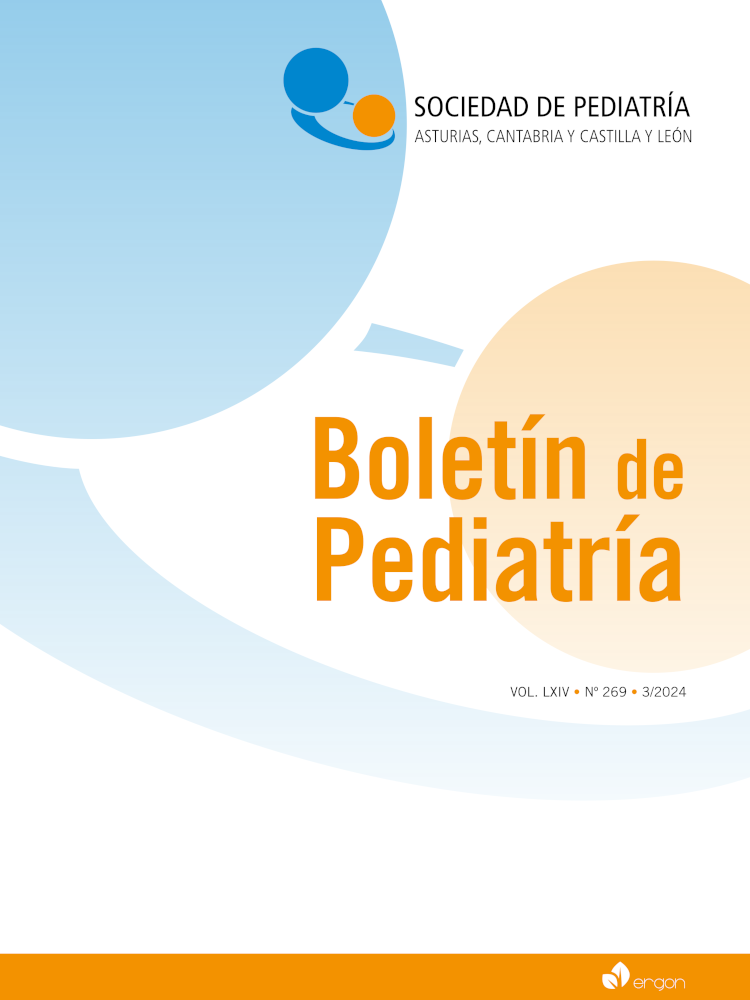Abstract
Introduction. Human milk (HM) is the ideal food for infants. In the short term it reduces respiratory infections and otitis media, and in the long term it improves cognitive development and reduces the risk of metabolic diseases such as obesity. HM is also critical for the development of the newborn’s microbiota. While a balanced microbiota is associated with better health outcomes, the presence of dysbiosis is associated with the development of chronic disease and immune dysfunction.
Development. Two fundamental components of HM are its own microbiota and oligosaccharides (HMOs). HMOs vary in quantity and composition throughout lactation, and among their many functions, their role as prebiotics stands out. Depending on the ability of bacteria to metabolise HMOs, they selectively induce the development of specific bacterial species, among which Bifidobacterium infantis stands out. HM could be considered a synbiotic, as it provides both HMOs and B. infantis. Both components have beneficial effects individually, but they also have synergistic effects.
Conclusions. HM is the best food an infant can receive due to its multiple benefits, some of which are based on its effect on the infant’s gut microbiota. The presence of HMOs and the HM microbiota itself, with bacteria such as B. infantis, are critical in achieving these benefits.
References
ESPGHAN Committee on Nutrition; Agostoni C, Braegger C, Decsi T, Kolacek S, Koletzko B, Michaelsen KF, et al. Breastfeeding: A commentary by the ESPGHAN Committee on Nutrition. J Pediatr Gastroenterol Nutr. 2009; 49(1): 112-25. https://doi.org/10.1097/MPG.0b013e31819f1e05
Szyller H, Antosz K, Batko J, Mytych A, Dziedziak M, Wrzesniewska M, et al. Bioactive components of human milk and their impact on child's health and development, literature review. Nutrients. 2024; 16(10): 1487. https://doi.org/10.3390/nu16101487
Jeong S. Factors influencing development of the infant microbiota: from prenatal period to early infancy. Clin Exp Pediatr. 2022; 65(9): 439-447. https://doi.org/10.3345/cep.2021.00955
Sekirov I, Russell SL, Antunes LC, Finlay BB. Gut microbiota in health and disease. Physiol Rev. 2010; 90(3): 859-904. https://doi.org/10.1152/physrev.00045.2009
Pannaraj PS, Li F, Cerini C, Bender JM, Yang S, Rollie A, et al. Association between breast milk bacterial communities and establishment and development of the infant gut microbiome. JAMA Pediatr. 2017; 171(7): 647-6=54. https://doi.org/10.1001/jamapediatrics.2017.0378
Zivkovic AM, German JB, Lebrilla CB, Mills DA. Human milk glycobiome and its impact on the infant gastrointestinal microbiota. Proc Natl Acad Sci U S A. 2011; 108(Suppl 1): 4653-8. https://doi.org/10.1073/pnas.1000083107
McGuire MK, Meehan CL, McGuire MA, Williams JE, Foster J, Sellen DW, et al. What's normal? Oligosaccharide concentrations and profiles in milk produced by healthy women vary geographically. Am J Clin Nutr. 2017; 105(5): 1086-100. https://doi.org/10.3945/ajcn.116.139980
Plows JF, Berger PK, Jones RB, Alderete TL, Yonemitsu C, Najera JA, et al. Longitudinal changes in human milk oligosaccharides (HMOs) over the course of 24 months of lactation. J Nutr. 2021; 151(4): 876-82. https://doi.org/10.1093/jn/nxaa427
Thum C, Wall CR, Weiss GA, Wang W, Szeto IM-Y, Day L. Changes in HMO concentrations throughout lactation: Influencing factors, health effects and opportunities. Nutrients. 2021; 13(7): 2272. https://doi.org/10.3390/nu13072272
Ray C, Kerketta JA, Rao S, Patel S, Dutt S, Arora K, et al. Human milk oligosaccharides: The journey ahead. Int J Pediatr. 2019; 2019: 2390240. https://doi.org/10.1155/2019/2390240
Hill C, Guarner F, Reid G, Gibson GR, Merenstein DJ, Pot B, et al. Expert consensus document. The International Scientific Association for Probiotics and Prebiotics consensus statement on the scope and appropriate use of the term probiotic. Nat Rev Gastroenterol Hepatol. 2014; 11(8): 506-14. https://doi.org/10.1038/nrgastro.2014.66
Lewis ZT, Totten SM, Smilowitz JT, Popovic M, Parker E, Lemay DG, et al. Maternal fucosyltransferase 2 status affects the gut bifidobacterial communities of breastfed infants. Microbiome. 2015; 3: 13. https://doi.org/10.1186/s40168-015-0071-z
Ward RE, Niñonuevo M, Mills DA, Lebrilla CB, German JB. In vitro fermentability of human milk oligosaccharides by several strains of bifidobacteria. Mol Nutr Food Res. 2007; 51(11): 1398-405. https://doi.org/10.1002/mnfr.200700150
Davis EC, Castagna VP, Sela DA, Hillard MA, Lindberg S, Mantis NJ, et al. Gut microbiome and breast-feeding: Implications for early immune development. J Allergy Clin Immunol. 2022; 150(3): 523-34. https://doi.org/10.1016/j.jaci.2022.07.014
Berni Canani R, Di Costanzo M, Leone L. The epigenetic effects of butyrate: potential therapeutic implications for clinical practice. Clin Epigenetics. 2012; 4(1): 4. https://doi.org/10.1186/1868-7083-4-4
Swanson KS, Gibson GR, Hutkins R, Reimer RA, Reid G, Verbeke K, et al. The International Scientific Association for Probiotics and Prebiotics (ISAPP) consensus statement on the definition and scope of synbiotics. Nat Rev Gastroenterol Hepatol. 2020; 17(11): 687-701. https://doi.org/10.1038/s41575-020-0344-2
McDonnell L, Gilkes A, Ashworth M, Rowland V, Harries TH, Armstrong D, et al. Association between antibiotics and gut microbiome dysbiosis in children: systematic review and metaanalysis. Gut Microbes. 2021; 13(1): 1-18. https://doi.org/10.1080/19490976.2020.1870402
Dai DLY, Petersen C, Hoskinson C, Del Bel KL, Becker AB, Moraes TJ, et al. Breastfeeding enrichment of B. longum subsp. infantis mitigates the effect of antibiotics on the microbiota and childhood asthma risk. Med. 2023; 4(2): 92-112.e5. https://doi.org/10.1016/j.medj.2022.12.002

This work is licensed under a Creative Commons Attribution-NonCommercial 4.0 International License.
Copyright (c) 2024 Boletín de Pediatría
